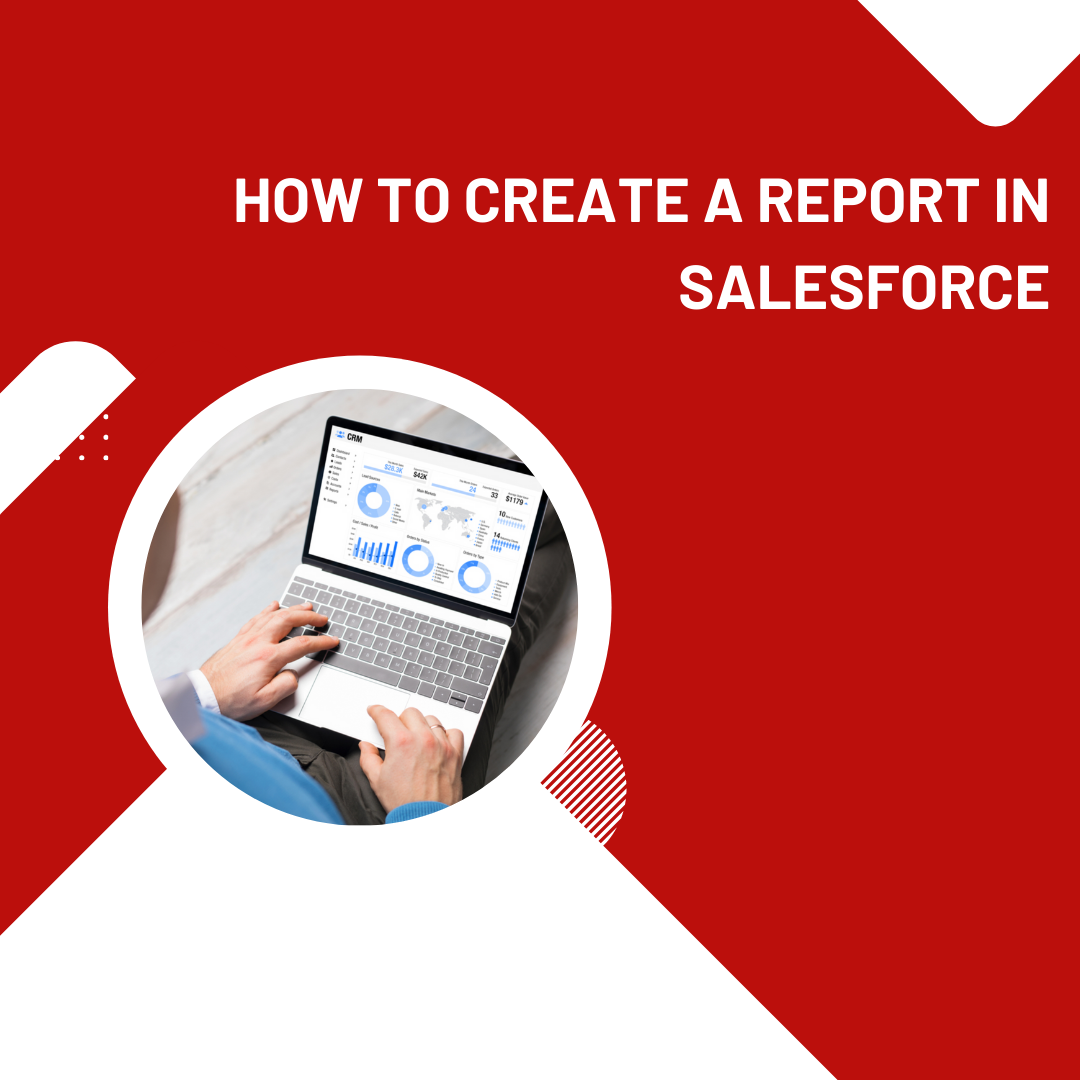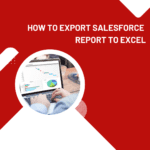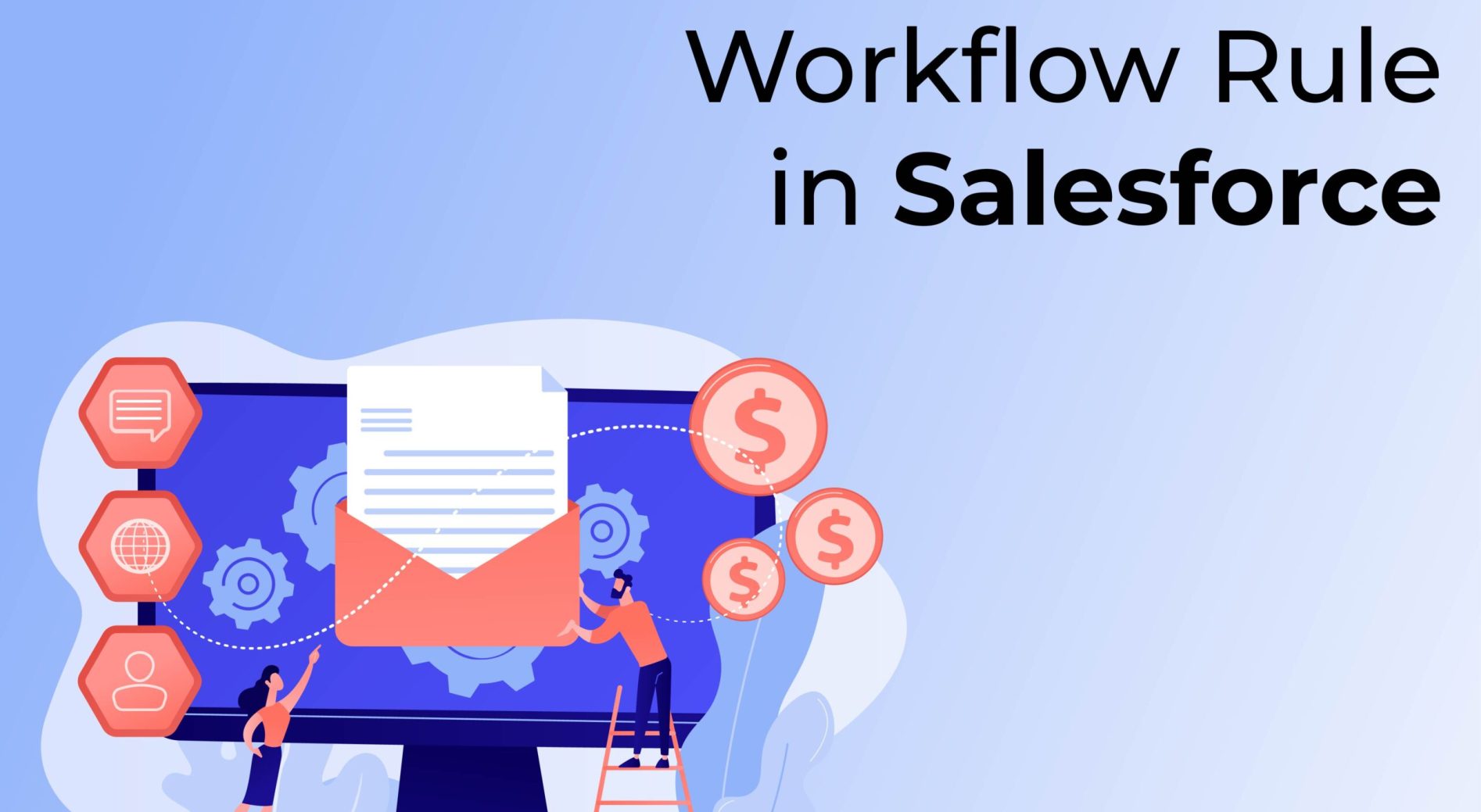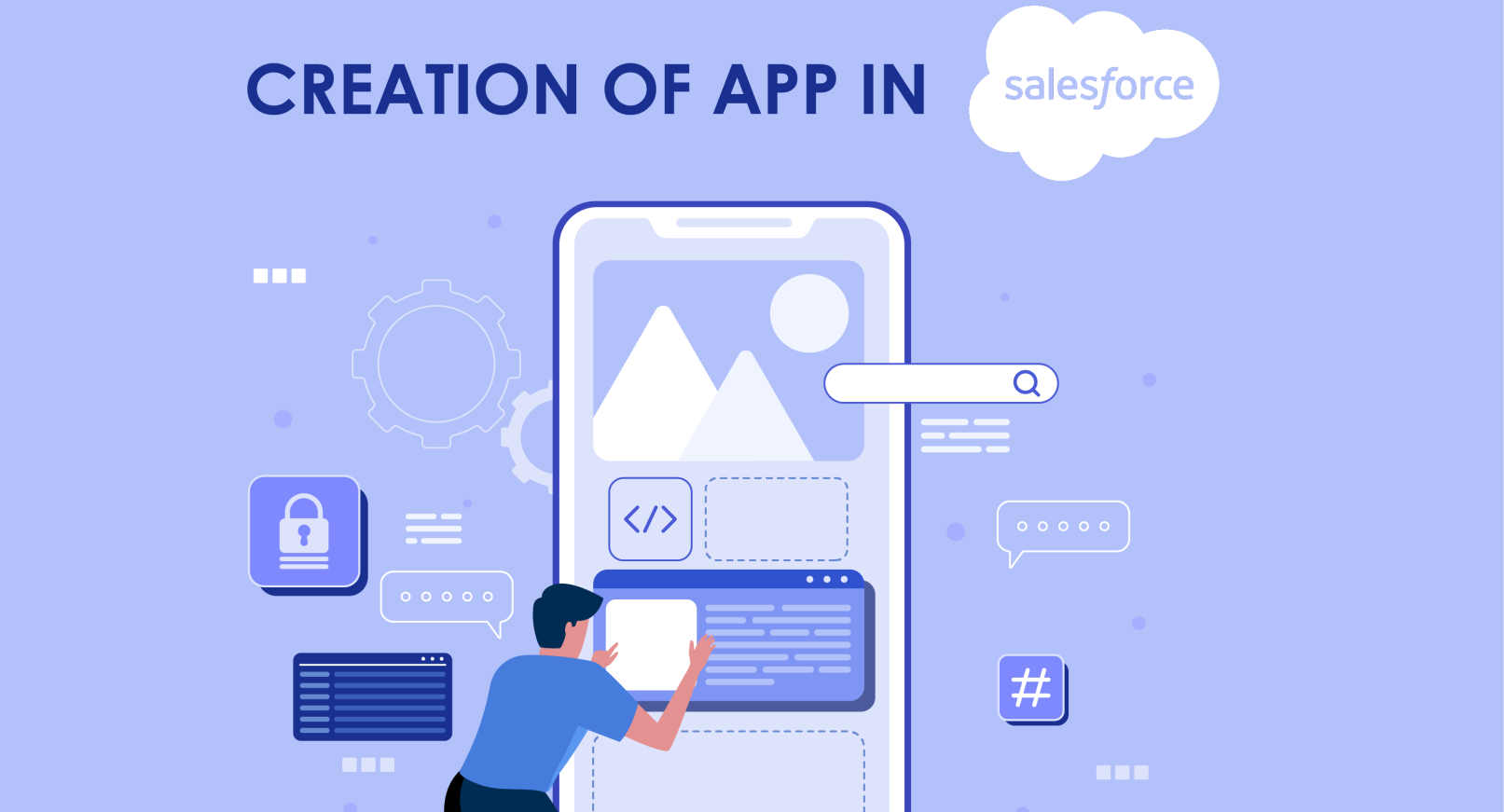
As per Forbes, data analytics can bring a lot of benefits to your organization. By leveraging the power of data analytics, you can identify potential risks, improve customer retention rate, and do many more. However, you cannot do data analysis until you generate accurate Salesforce reports. Whether checking your organization’s progress or showcasing results at the board meeting, accurate reporting is critical to your Salesforce success.
But, the reality is that generating Salesforce reports can be pretty tedious, especially if you are relatively new to the platform.
To help you get started, we have created this comprehensive guide on how to create a report in Salesforce. Don’t forget to enroll in QuantoKnack’s Salesforce Admin Course to learn how to create, export, and delete Salesforce reports like a pro.
What Is a Salesforce Report?
A Salesforce report is described as a list of records that contains data in an organized tabular or graphical format. Moreover, Salesforce allows you to create different types of reports to help you analyze and understand your data better.
Why Should You Master Salesforce Reports?
Accurate reporting has its own place in many business scenarios. Organizations look for it when moving to a CRM system like Salesforce. For example, a small business may need a monthly report to analyze their progress, view new customers/clients, and check the growth of their orders. On the other hand, an enterprise may want to leverage reports to identify which products/services generate the most ROI and which generate the least.
Salesforce makes it much easier for you to report any data related to your customers. However, with so many features and functions, Salesforce admins can feel overloaded with possibilities – making it challenging to decide where to start. Enroll for QuantoKnack’s Salesforce Admin Course and grab the opportunity to learn Salesforce features and functionality as an Admin.
Types of Salesforce Report
Salesforce reports grow your brand and help you scale. Below are the four basic Salesforce report types you should know.
Summary – Common & Popular
Salesforce Summary Reports are one of the basic and frequently used types of reports. These Reports are utilized to group rows of data.
The “Group Field” plays a crucial role in Summary Reports. Grouping is done depending on the value of the selected field. Suppose a property object has a custom field “Status” of picklist type and has two values (Sold, Available).
Then, a summary report can be generated in two groups by choosing the status field as a grouping field, a ‘Sold’ group, and an ‘Available’ group.
Tabular – Simplest & Fast Export Format
This report suits you if you want to show data without subtotals, calculations, or groupings. It is the simplest Salesforce report type, presenting data in rows and columns.
Matrix: Most Complicated; Perfect for Large Datasets
Matrix Reports are the most challenging types of reports available on the Salesforce platform. Setting up a matrix report is very time-consuming as well since you have the ability to group data by columns and rows. Like summary and tabular reports, Matrix reports can be utilized with dashboard tools.
The matrix reporting format is a great choice when reviewing data like the number of products sold or revenue totals. Once the report is generated, you can easily skim through the report to get the desired information.
Joined Reports – Comparing Datasets
As the name suggests, Salesforce’s Joined Reports allows you to create two unique reports and “join” the data. The data fetched from each report will be displayed side by side so that you can easily compare the two sets of information.
While many users only generate two reports utilizing the Joined Reports, you can actually add a maximum of five different blocks. These reports can help you gain valuable insights into a specific account.
Joined Reports are the unique type of Salesforce reports that are incompatible with dashboarding tools. This incompatibility is because dashboard components can display information from a single report.
Since many organizations prefer to view data in a visual format, the Joined Reports function is one of the least frequently used types of Salesforce reporting tools.
Component of Salesforce report
Before you start learning how to create a report in Salesforce, it is essential to know some basic components.
Below are the three different components of a Salesforce Report:
Filters
Filters can be utilized to filter the reports to display only the required data. Suppose the requirement is to get a report on sold properties. Then click on Add Filter, select the ‘Status’ field, choose the value ‘Sold’ as shown below, and click on ‘OK.’
Preview
If you chose the four fields: Status, Property Name, Price, and Transaction Type, then the preview for the report is shown below:
Fields
This refers to all the fields of the ‘Property’ object. There are some buttons right to the ‘Fields’ label which are used to group fields. You can additionally search for a specific field in the quick find box. And you can drag and drop the fields to the preview page where you want to report on.
Report Types In Salesforce
Before start creating the report we should know the report types.
Report types are a predetermined amalgamation of related objects and their fields that we can use as starting points when creating new custom reports. In other words, Salesforce report types are containers that include data and fields on which we can create custom reports.
The different report types are available, such as:
- Standard report types
- Custom report types
Standard report types
Standard report types are available for designing reports on standard and custom objects and their related objects by default. When creating a new custom field, it is automatically added to standard report types.
Custom report types
Custom report types allow us to build our own report framework in the report wizard; users can create custom reports.
How to Create Reports in Salesforce like a Pro: 6 Simple Steps Guide
Here we have created some simple steps to help you learn how to create a report in Salesforce. Let’s follow it and prepare a valuable report:
Step 1: Create a New Salesforce Report
To find a Salesforce report, you will need to look at your horizontal navigation bar for the “Reports” object.
If you can’t find this tab in the bar:
Look for the objects that are placed in the “More” tab;
Click on “New Report,” and you’ll see the below screen.
Step 2: Choose a Salesforce Report Type
Pick the Salesforce report type and click the “Continue” button. Remember that the list of reports is quite exhaustive and ranges from various types of “Opportunities,” “Accounts,” to “Deals,” “Cases,” etc. To simplify it, you can start typing some relevant keywords. For instance, if you are looking for a report on your deals, you can click and type “Deals” and get the right outcomes.
Step 3: Filter Your Data
Having a filter is like a blessing if you have extensive data lists. To start choosing the scope of the Salesforce report using the standard Salesforce report filter logic, click the “Filters” panel.
Below is a quick overview of different filters you can use to define the scope of your Salesforce report:
- Standard
- Many objects have standard filters by default. However, some standard filters applied to most objects are Date Field and Show Me.
- Filter Logic
- You have to add a condition to let the system know how the fields need to be evaluated. Some filter logic operators consist of And, Or, or Not.
- Field Filter
- These filters are specifically for reports, workflow rules, list views, etc. This is helpful for matrix, tabular, or summary reports, where you can easily drag them from the Fields pane to prepare a filter for your report.
- Cross Filter
- You can filter a report based on conditions such as With or Without. The system will additionally enable you to add sub-filters.
- Row Limit
- You can limit the rows a Salesforce report will return for a tabular report, often utilized as a chart or dashboard table source.
Just play around with these filters and determine what fields you want to report on.
Let’s say you want to filter reports based on the open deals. Thus, you need to:
- Find the field called “Status,”
- Click into the “Status” filter type and determine what status you want to show (e.g., only open deals status, lost ones, won, or all),
- Click “Apply.”
Step 4: Click the Outline Pane to Display Columns/Fields
The Salesforce Lightning reporting allows you to add or remove columns on your report utilizing a simple drag-and-drop interface. You can find the information you want in the columns on the left side of your screen and then drag the field to the Salesforce report pane on the right.
You can double click or simply drag the field over to the report on the right and to the location you need. For instance, the Deal name is not sufficient in the report. Eventually, you want to add an estimated closed date, so you can just type “Estimated Close Date” in the Columns, and it will fetch your desired outcomes.
Step 5: Group Your Data
If you wish to do the estimated closed date as the grouping, you can type “Estimated Close Date” in the Groups, and your outcomes will be filtered.
When grouping “Deals” by “Estimated Close Date,” furthermore, you can group the data by Day, Calendar Month, Calendar Week, etc.
Step 6: Saving Your Salesforce Report
In order to save your Salesforce report, you will be required to follow the below steps:
- Click “Save & Run”,
- Fill the “Save Report” details by giving it a “Report Name,” “Report Unique Name,” and “Report Description.”
- Choose a Folder to save your report. If you want to make it visible only to you, you must choose “Private Reports Folder.” However, if it should be visible for your organization, select “Public Reports Folder.”
- Click “Save.”
If you want to level up your game, Salesforce allows you to create dashboards. These are some combinations of reports displayed side-by-side using charts, tables, gauges, or metrics.
Think of reports as the raw data and dashboards as the visually appealing layout that everyone in your company will appreciate.
The Major Difference Between Salesforce Lightning and Classic Report Types
Salesforce Lightning – the upgraded version of Salesforce is a complete overhaul of the user interface within Salesforce, and it starts with cleaner esthetics.
Salesforce Lightning enhance user adoption as it is much cleaner to look at, making it simpler to use. However, it still maintains many functions of its predecessor.
Further, it’s just human nature to choose prettier things, and with this, the better something looks and feels, the more likely people will be willing to use it.
The interface overhaul also provided one essential change to Salesforce, which aligns with the way everyday users utilize their technology in today’s age. It is optimized for mobile users, enabling them to interact with Salesforce in their preferred way. Regardless of whether that is on mobile or desktop, at the office, at home, or on the go, it makes user adoption extremely easy.
Make Reports That Matter
Salesforce is a robust platform with a comprehensive suite of reporting tools. The above-listed six steps can help you create better reports and keep your team updated on the organization’s progress.
Once you learn how to create a report in Salesforce and create the reporting layout that works perfectly for your organization, future reports can be automated, allowing you to access the data you need quickly, on your specified schedule, and with no additional effort.
If you are ready to take your data analytics and Salesforce reporting next level, then enroll in QuantoKnack’s Salesforce developer training or salesforce Admin Course. You will learn a lot of techniques and methods that will make your reporting task much easier.





